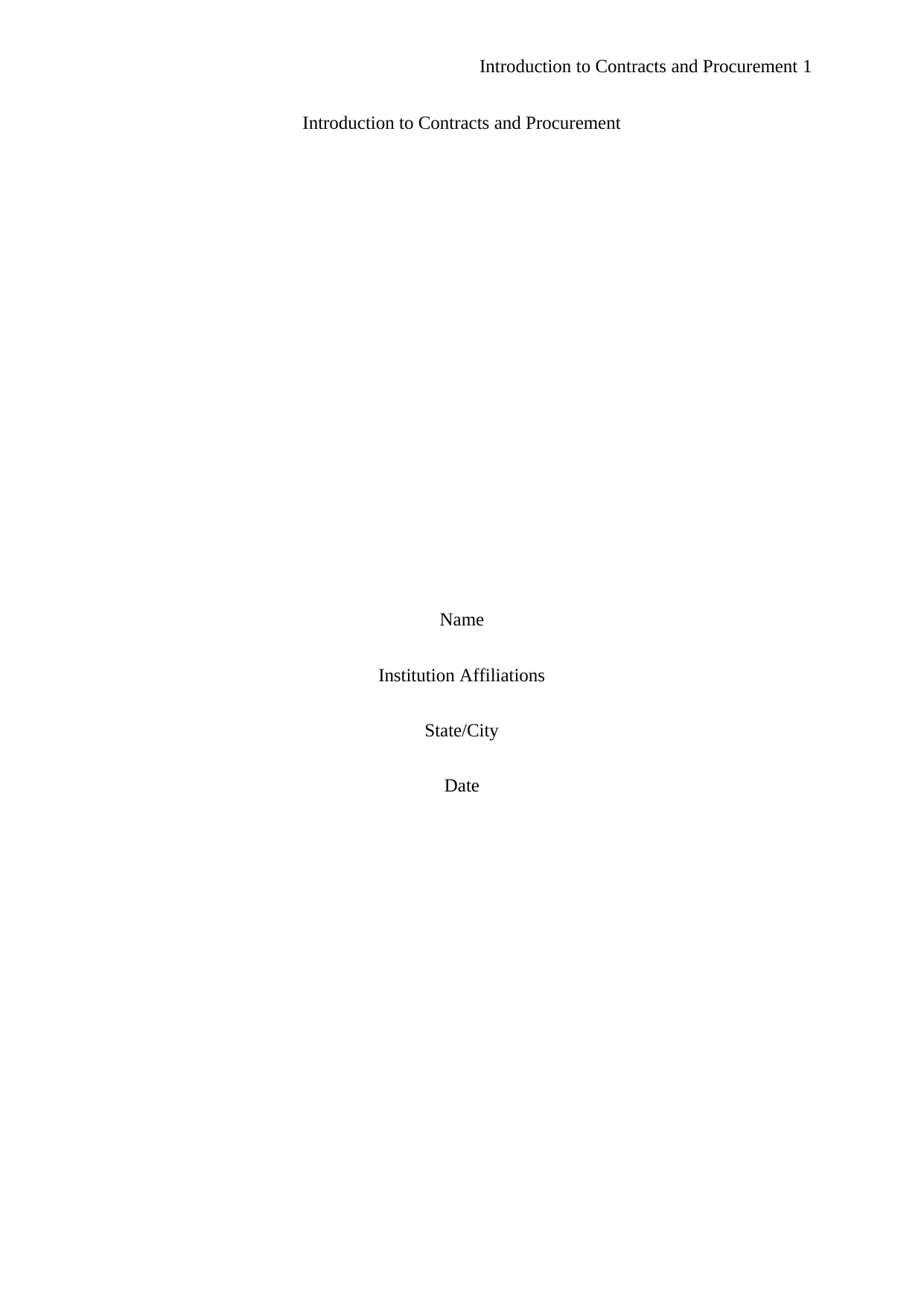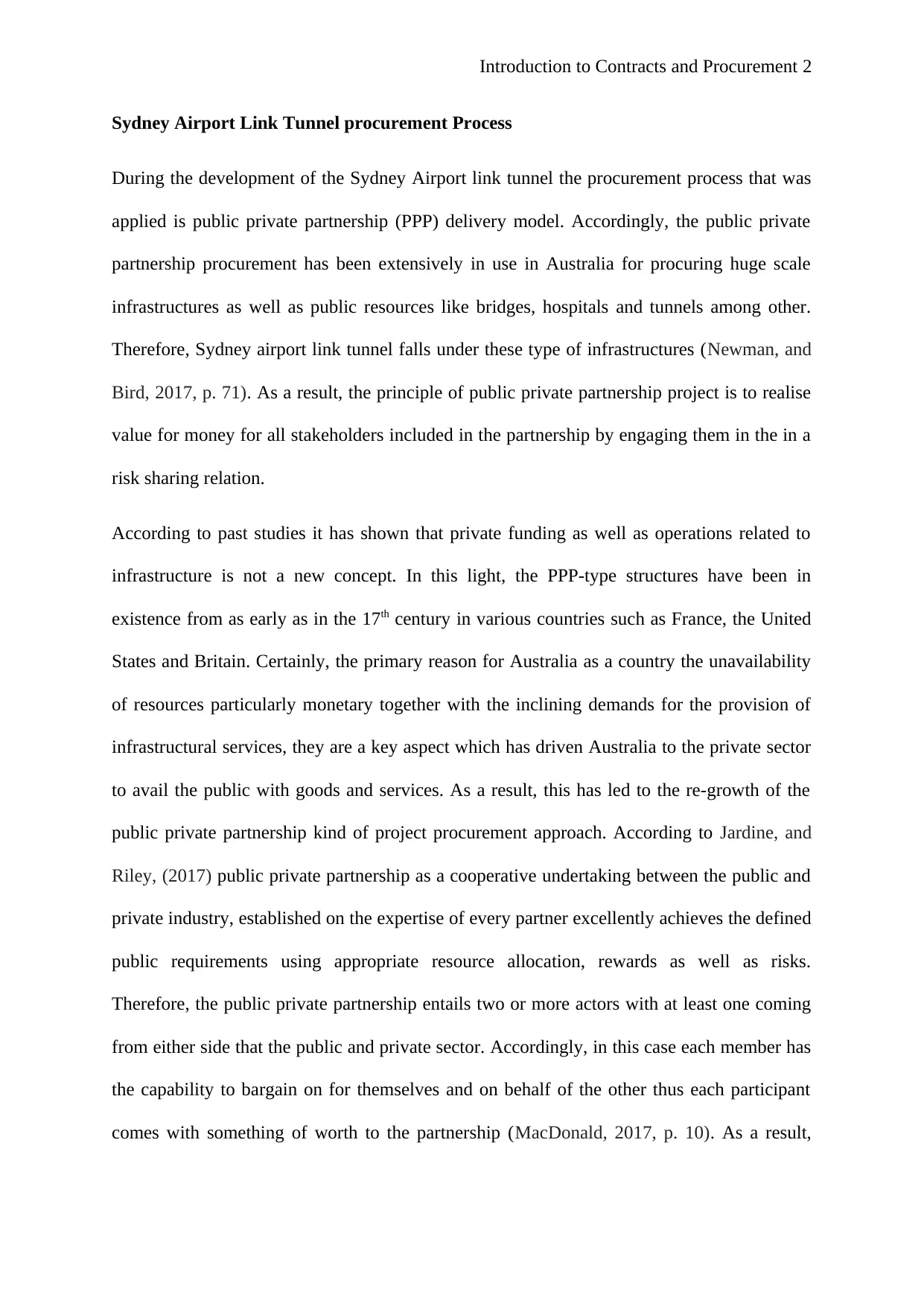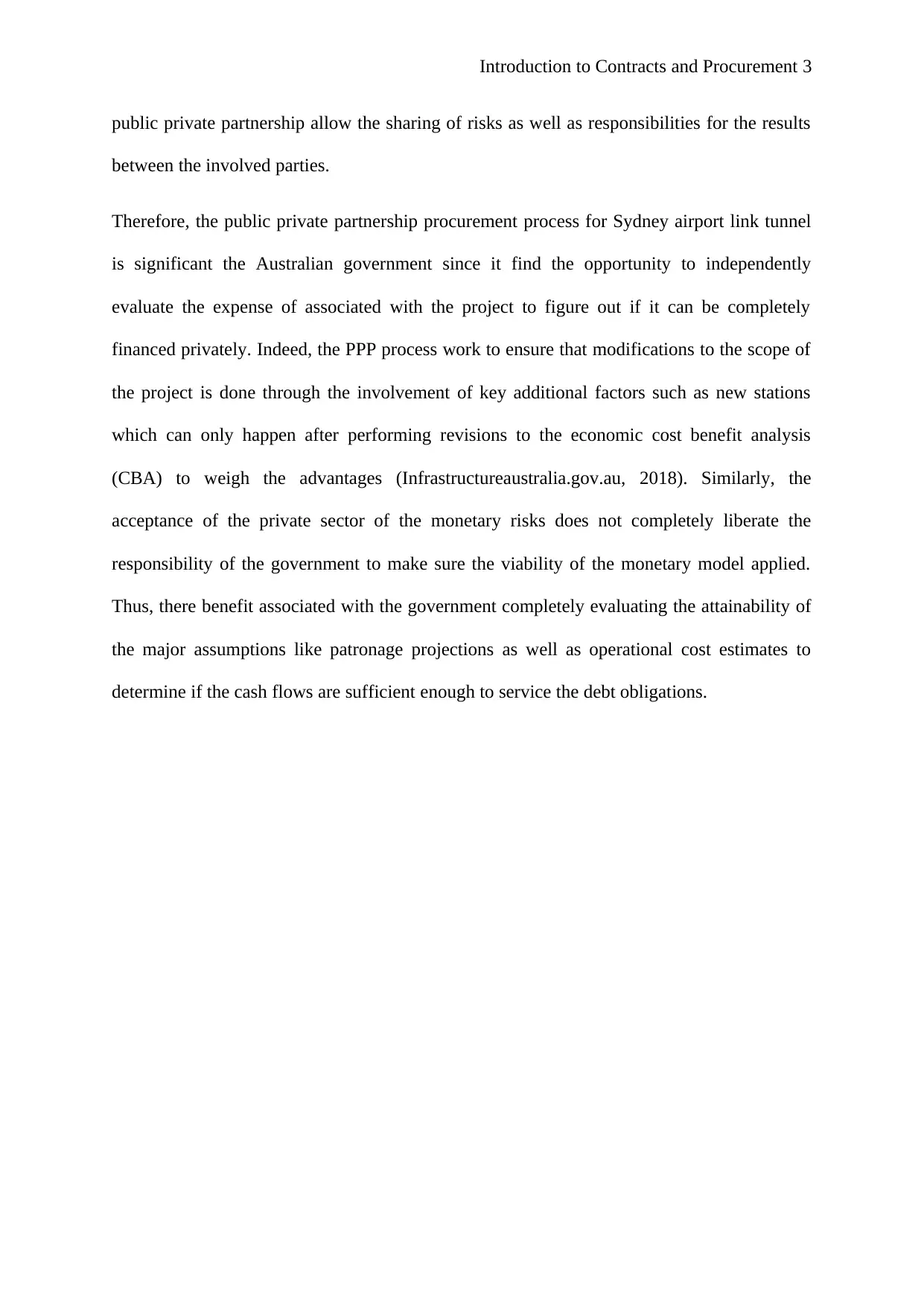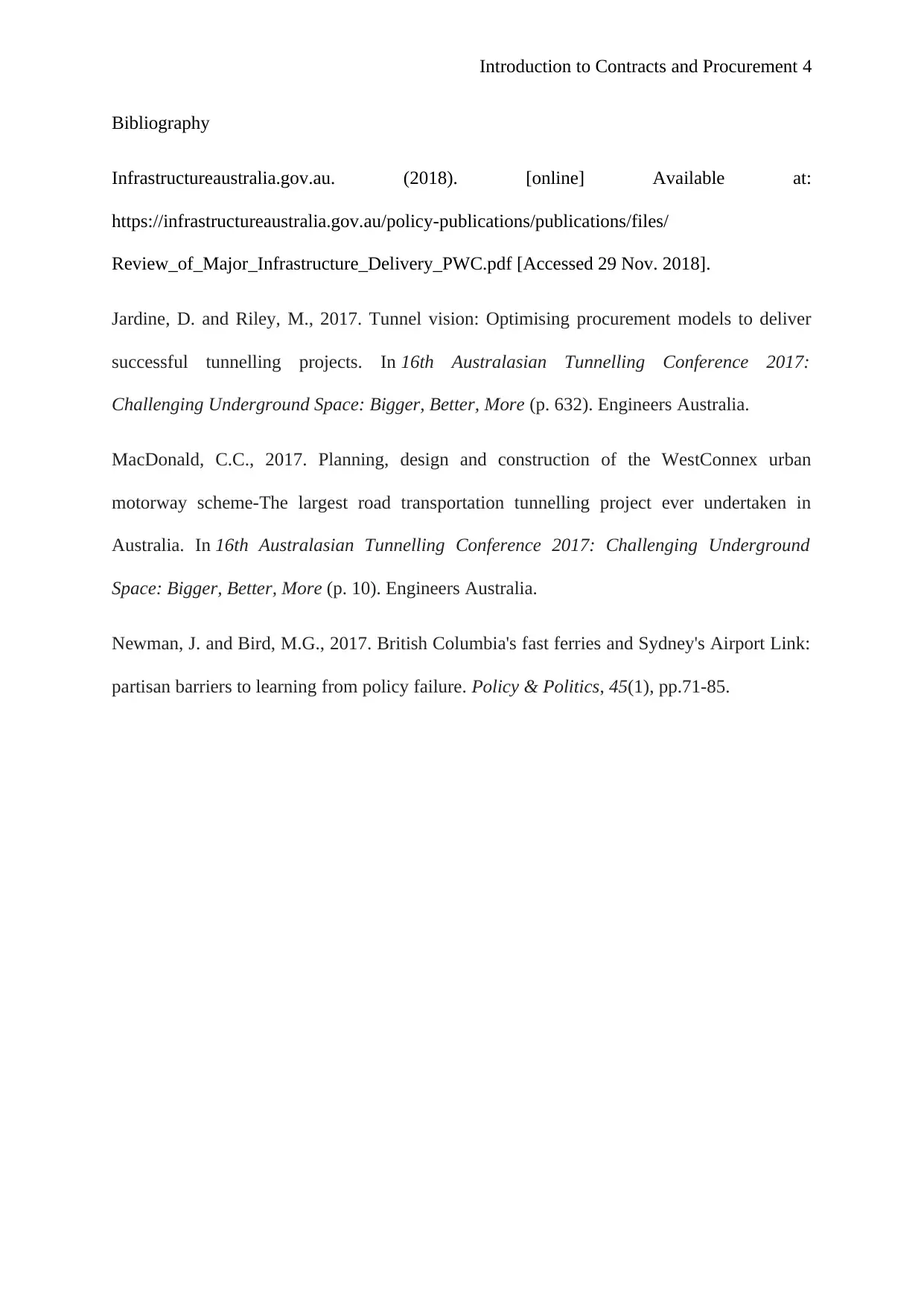Sydney Airport Link Tunnel: Public Private Partnership Procurement
VerifiedAdded on 2023/05/28
|4
|754
|241
Report
AI Summary
This report provides an overview of the procurement process used in the Sydney Airport Link Tunnel project, focusing on the Public-Private Partnership (PPP) delivery model. It highlights the extensive use of PPPs in Australia for large-scale infrastructure projects due to the value for money achieved through risk sharing among stakeholders. The report discusses the historical context of PPPs, noting their presence since the 17th century and their resurgence in Australia due to resource constraints and increasing demands for infrastructure. It emphasizes the importance of evaluating project expenses and economic cost-benefit analysis, especially concerning modifications and the involvement of additional factors. The report also underscores the government's responsibility in ensuring the viability of the monetary model, including assessing patronage projections and operational cost estimates to determine the sufficiency of cash flows for debt obligations.
1 out of 4











![[object Object]](/_next/static/media/star-bottom.7253800d.svg)